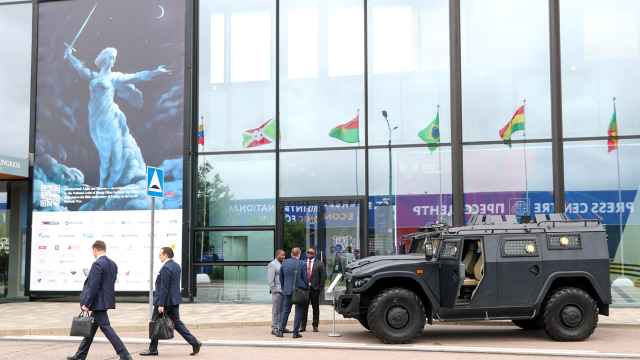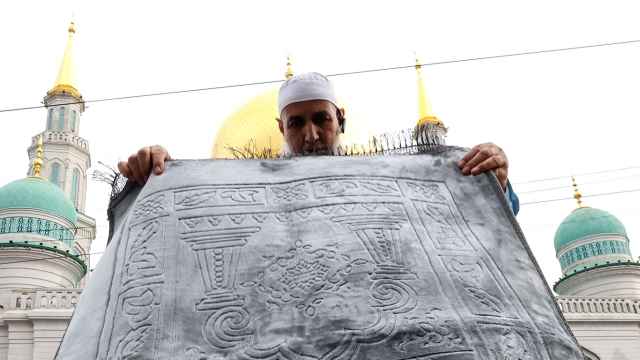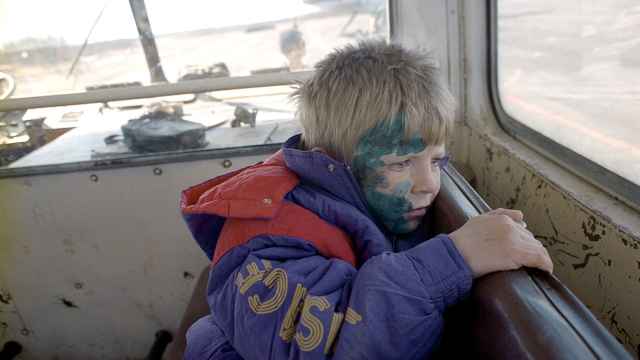Arkhstoyanie at Nikola-Lenivets Lazily Celebrates its 15th Year
The festival of art, performance and music took place this past weekend
In 1989 a group of artists led by Nikolai Polissky began to move to this beautiful land not far from Kaluga to the southeast of Moscow. The idea was to build an land art park: art objects made of various materials that would be set in the natural surroundings to show off art and nature in harmony.
For 15 years they have celebrated their art park in the early autumn with a festival called Arkhstoyanie. For three days the vast space of the park is filled with art objects, performances, music, food, guests, pets, general merriment and appreciation of culture and nature.
This year the theme of the festival was “laziness” — a concept that is very important in Russian culture, a trait both soundly condemned and shamelessly envied.
But if the artists celebrated laziness, the festival participants and visitors did not laze about over the weekend.
For 15 years they have celebrated their art park in the early autumn with a festival called Arkhstoyanie. For three days the vast space of the park is filled with art objects, performances, music, food, guests, pets, general merriment and appreciation of culture and nature.
This year the theme of the festival was “laziness” — a concept that is very important in Russian culture, a trait both soundly condemned and shamelessly envied.
But if the artists celebrated laziness, the festival participants and visitors did not laze about over the weekend.
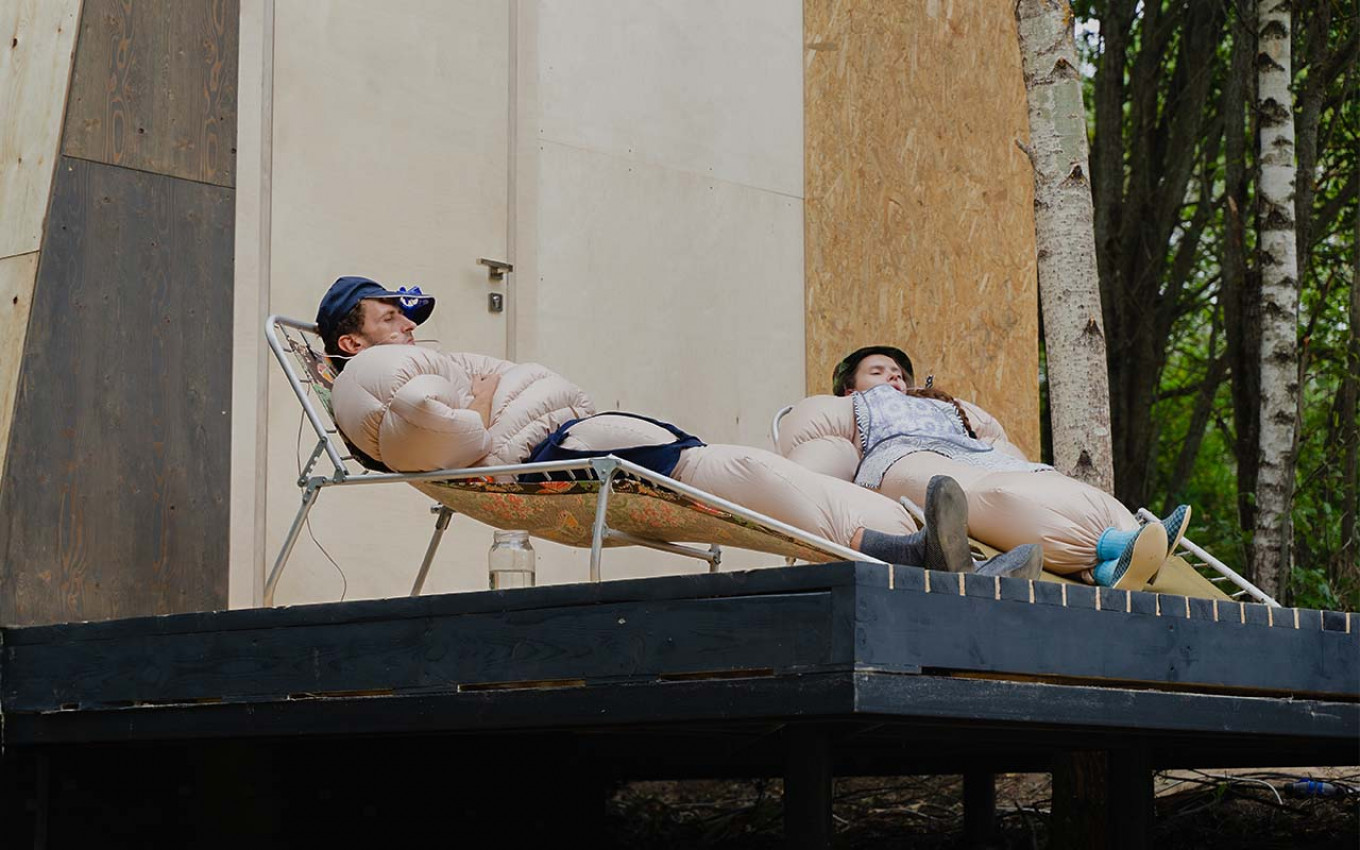
Art object "House with Mezzanine" by architect Alexei Luka and performance "Positive Dynamic" by director Yuri Kvyatkovsky.
The Moscow street artist Alexei Luka has created a house made of cast-offs that lazily leans against the ravine.
Maxim Chernyshev
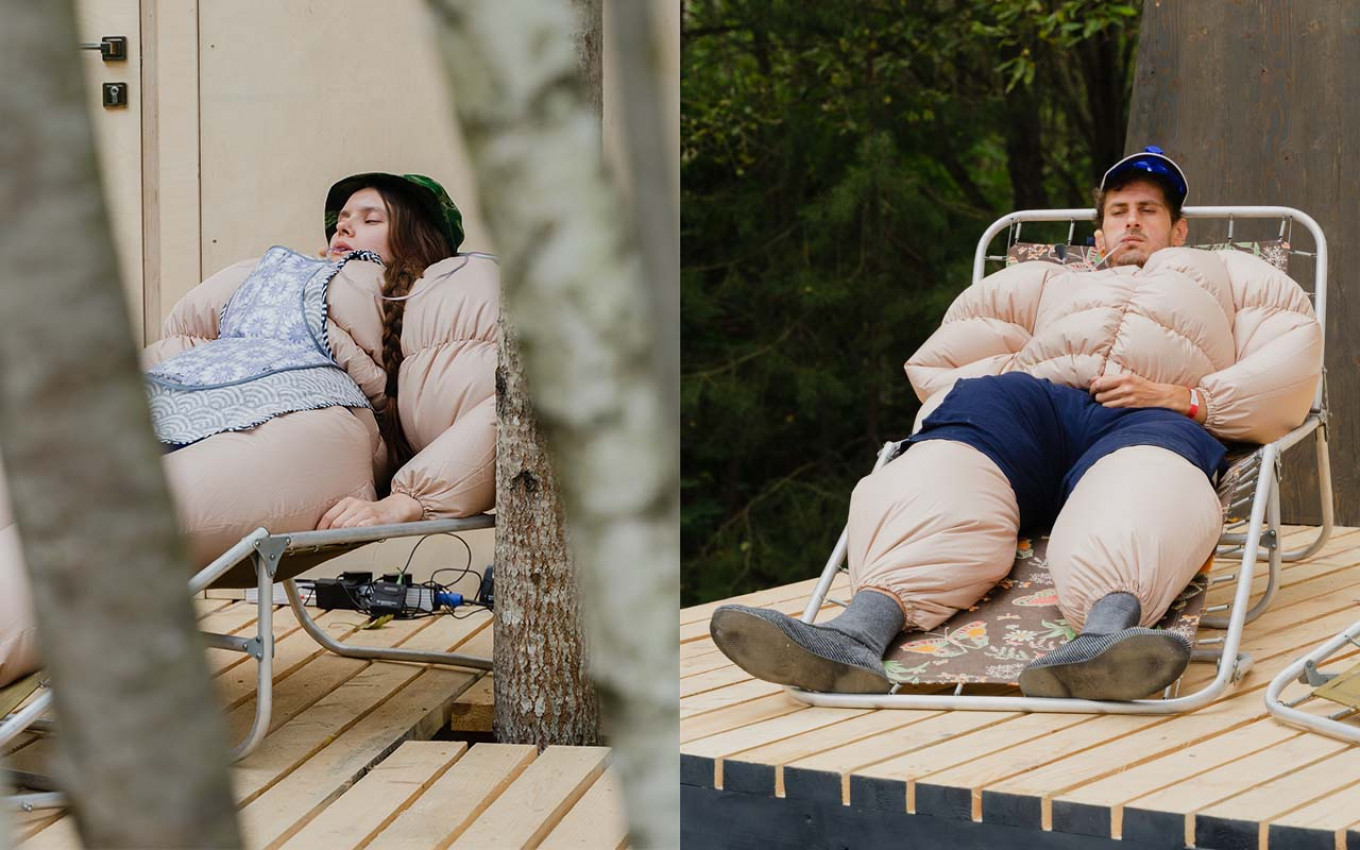
Art object "House with Mezzanine" by architect Alexei Luka and performance "Positive Dynamic" by director Yuri Kvyatkovsky.
The very lazy humans in "Positive Dynamic" try to open their mouths to the sounds of snores and moans that are the musical accompaniment to the performance.
Maxim Chernyshev
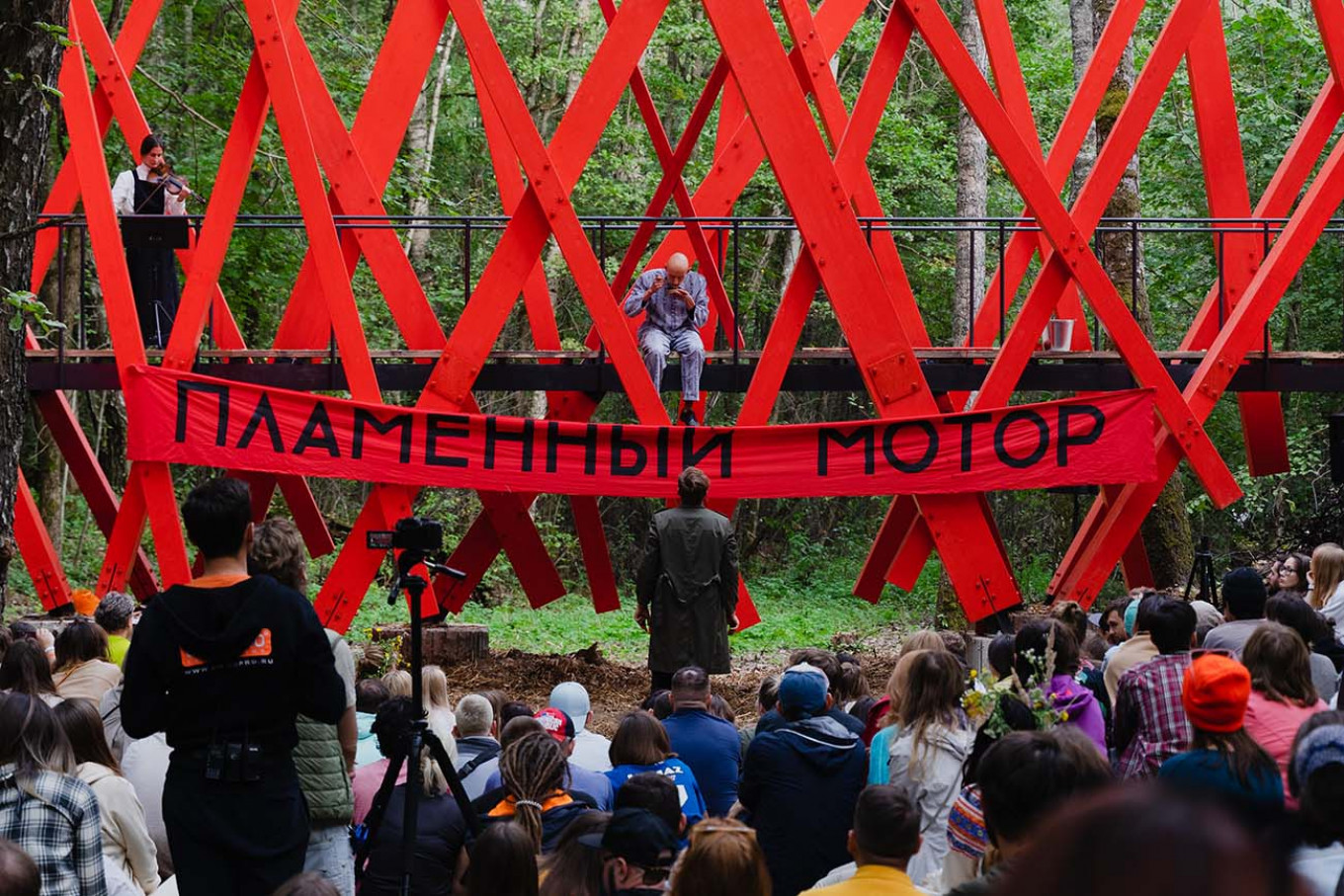
"Red Forest" by artist Igor Shelkovsky.
This 30-meter wooden bridge stretches over a deep ravine, contrasting with the surroundings in shape and color.
Maxim Chernyshev
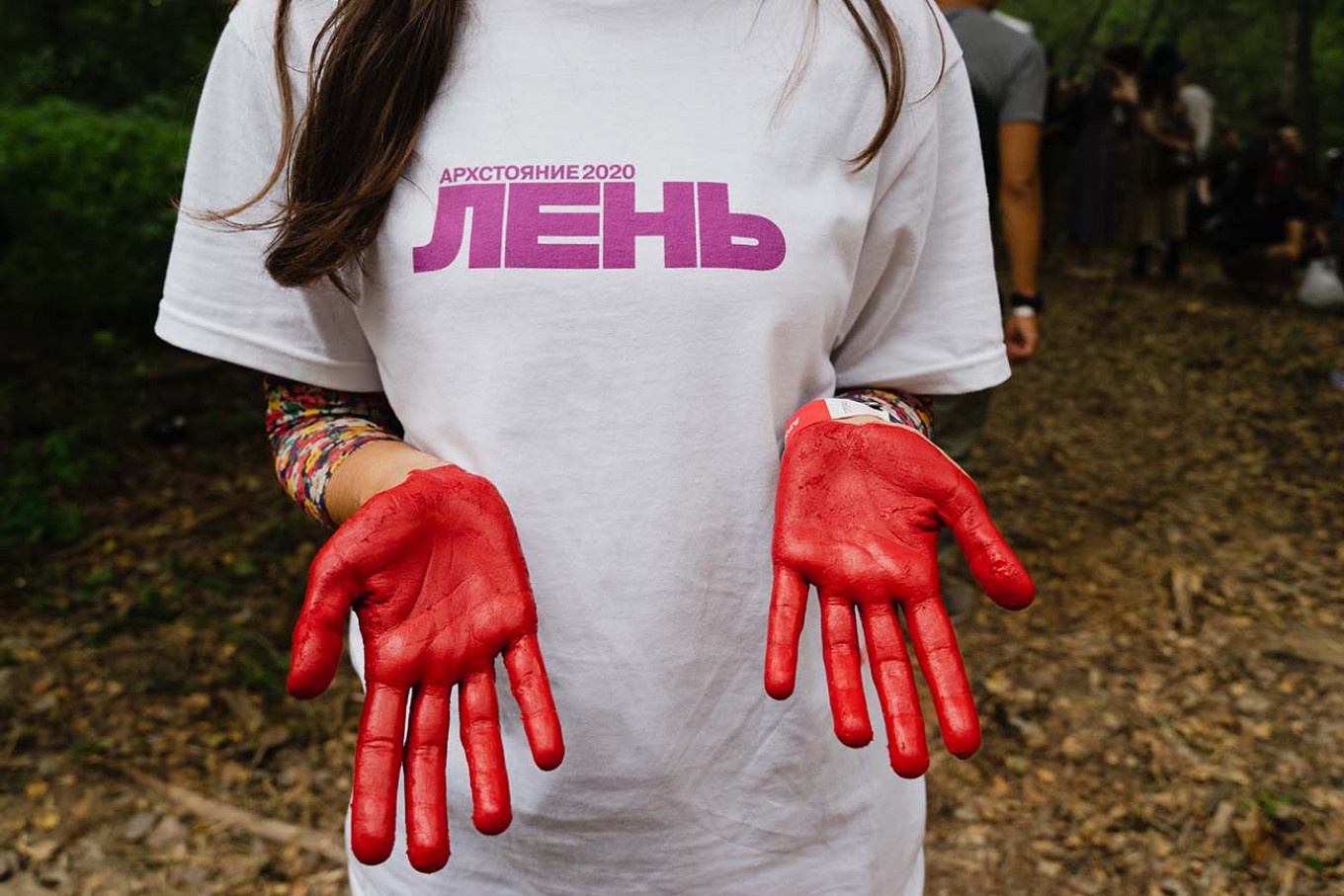
"Red Forest" by artist Igor Shelkovsky.
Shelkovsky had the idea for this art object for many years and was searching for the right location. He was supported by the AZ Museum, whose general director Natalia Opaleva and art director Polina Lobachevskaya are dedicated to bringing to the public the legacy of Soviet-era non-conformist artists.
Maxim Chernyshev
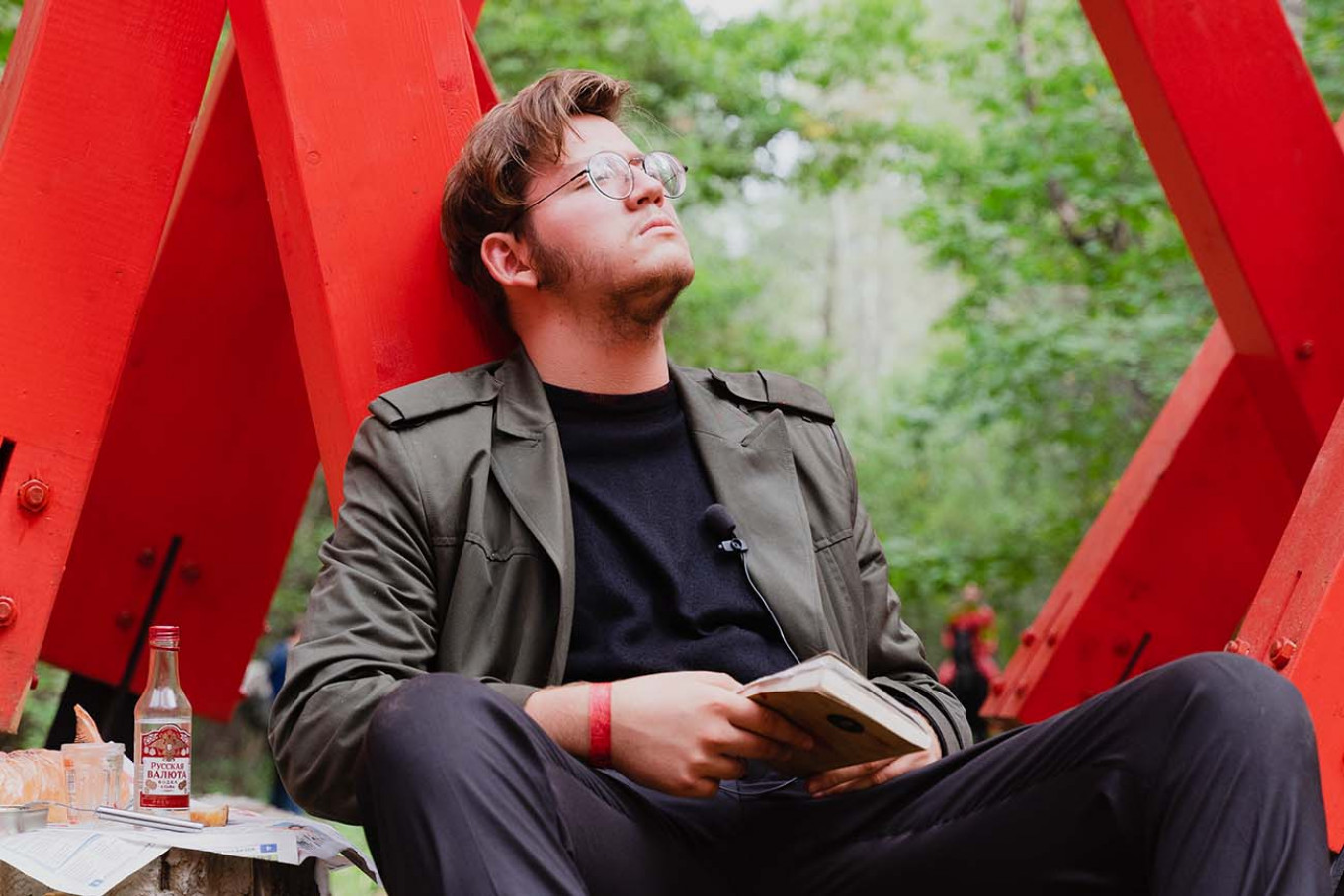
"Red Forest" by artist Igor Shelkovsky and performance "Transitional Period" by director Ivan Kvyatkovsky.
In the performance "Transitional Period," a series of characters cross the Red Forest bridge, bending time: the horse from Petrov-Vodkin's painting, acrobats building utopian socialism, musicians...
Maxim Chernyshev
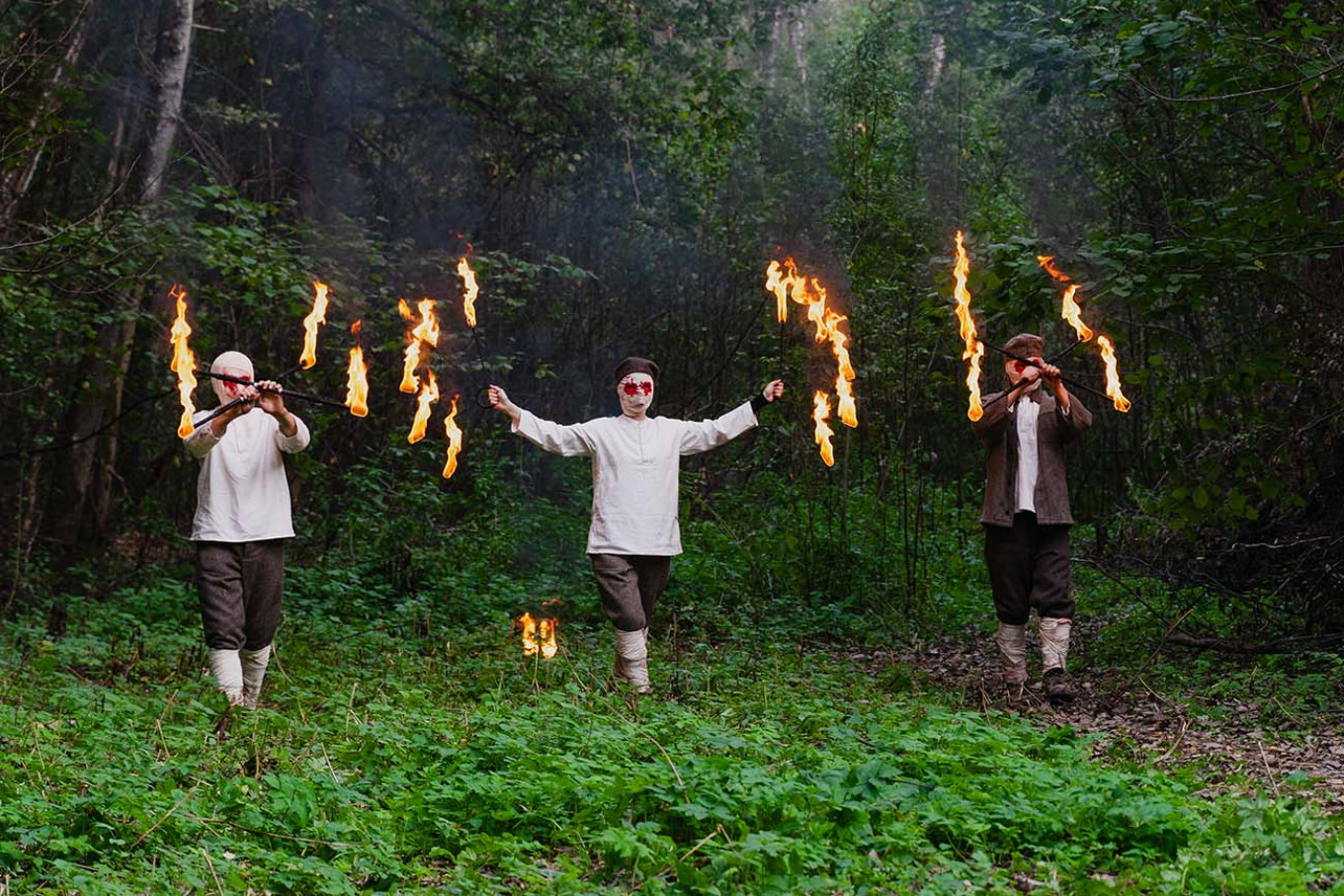
"Red Forest" by artist Igor Shelkovsky and performance "Transitional Period" by director Ivan Kvyatkovsky.
A tribe with the fire of the new age appear in the ravine below the bridge.
Maxim Chernyshev
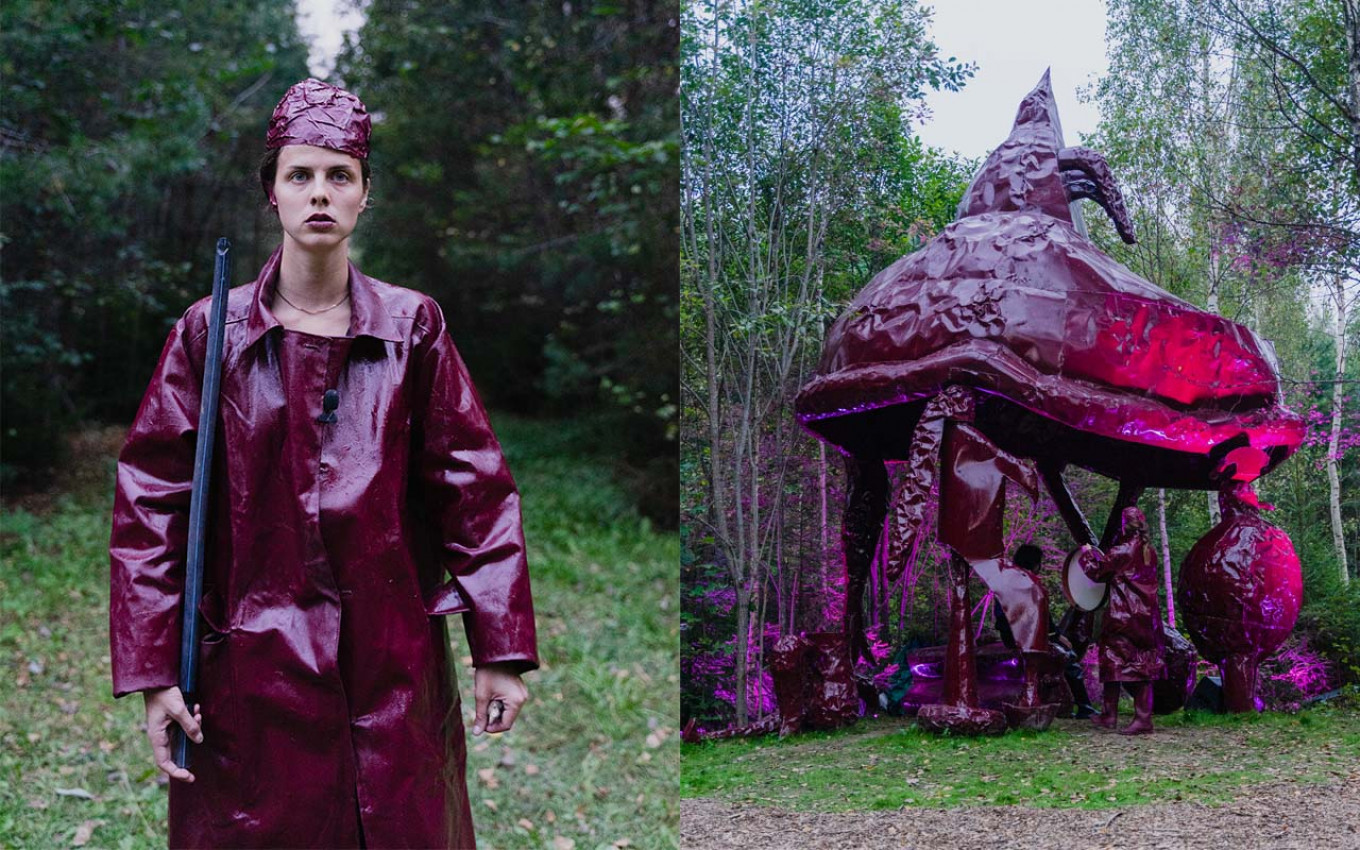
"Pergola" sculpture by Ivan Gorshkov and "Rituals of the Rest Stop" by director Yuri Kvyatkovsky.
A pergola that is a mix of architecture and sculpture looks like ancient ruins in the forest. The creatures who live there speak and sing in an imaginary language.
Maxim Chernyshev
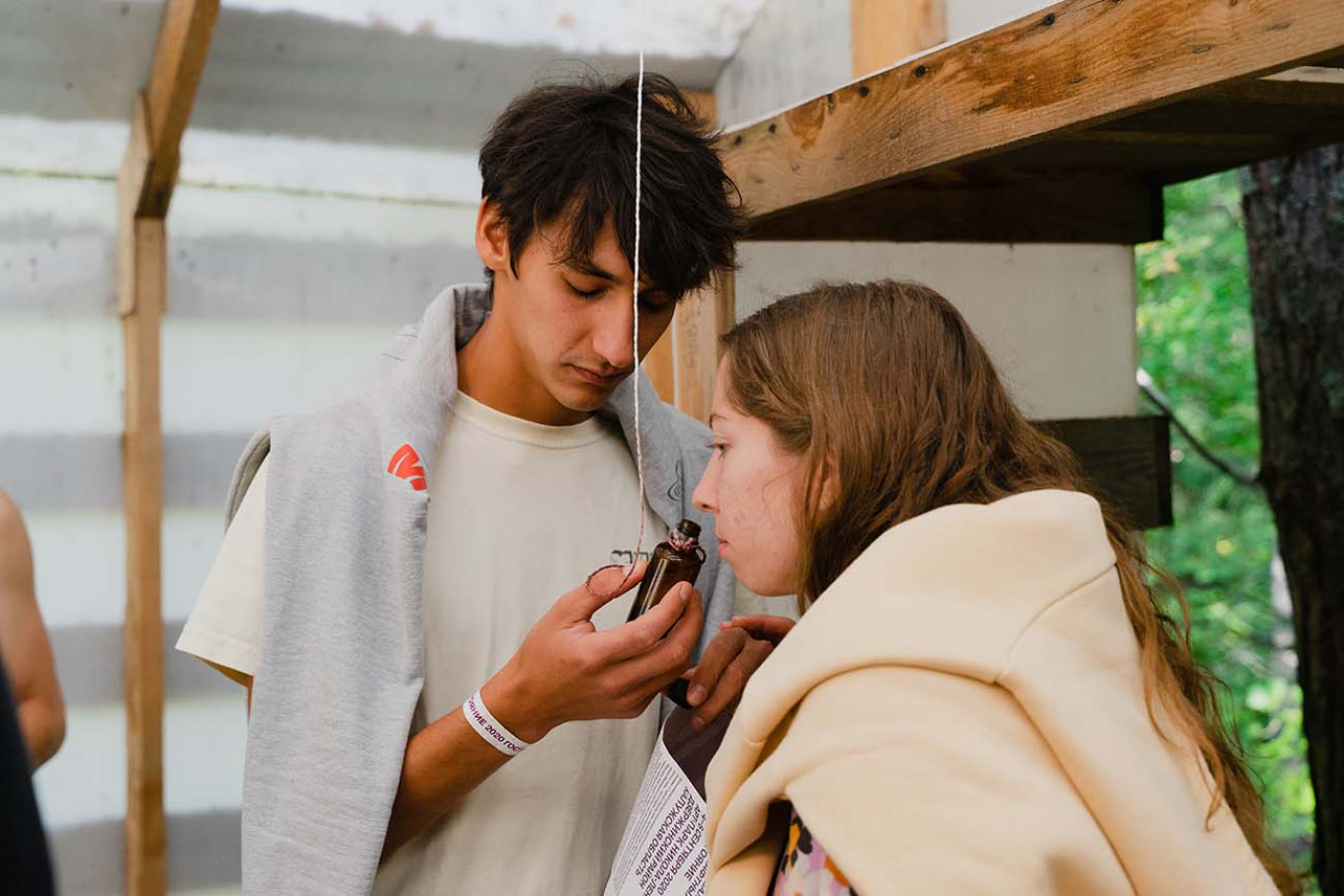
"What I Do When I'm Lazy," installation by Elina Kulikova
The audience for this performance was encouraged to lie down and catch the scents that artist and theatrical director Kulikova believes are associated with laziness. The scents were accompanied by sounds also associated with laziness: snores, aimless whistling, the squeak of a couch...
Maxim Chernyshev
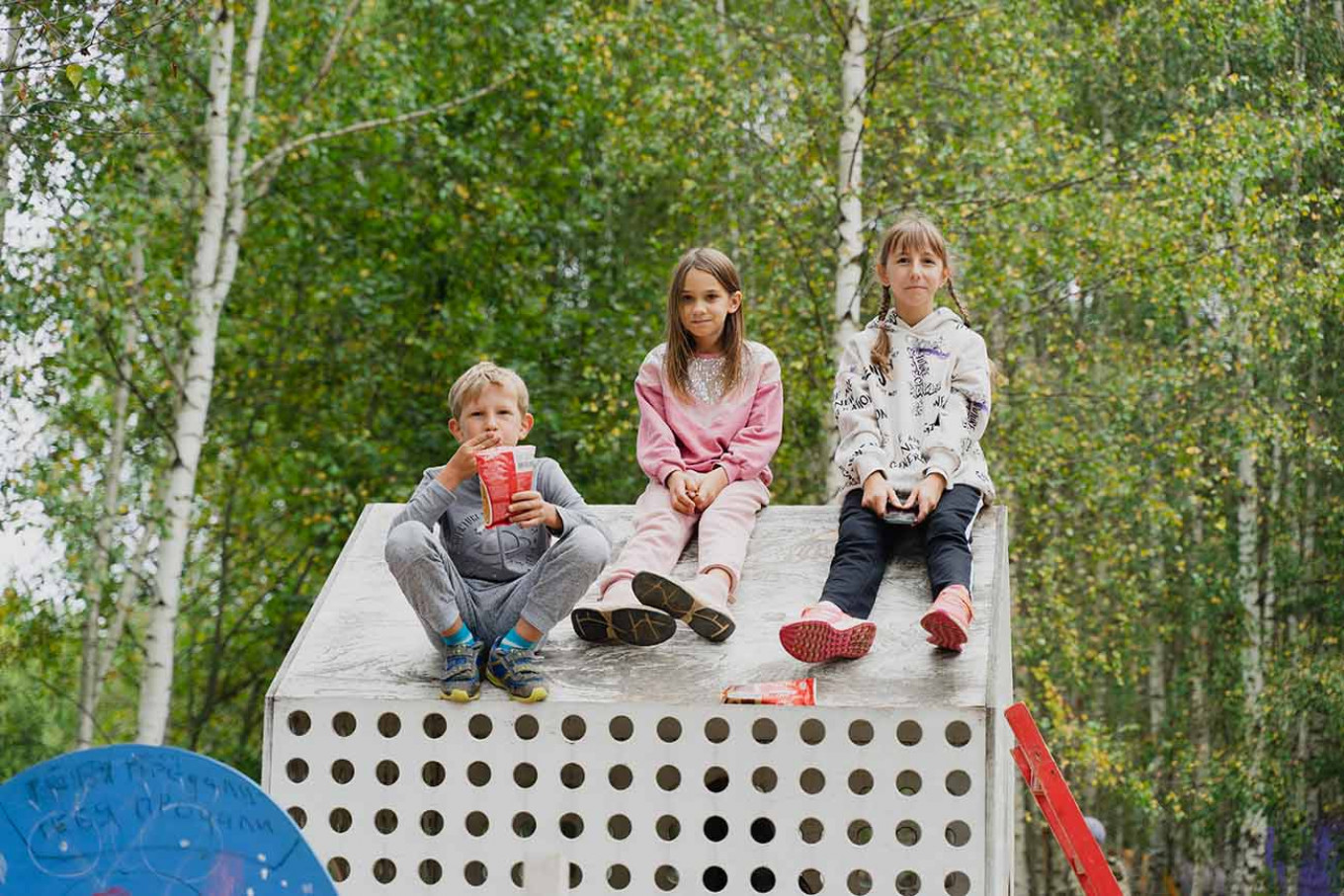
Arkhstoyanie 2020
Hundreds of people of all ages attended the weekend event. The forest, fields and art objects are not only meant to be admired, but to be climbed, too.
Maxim Chernyshev


